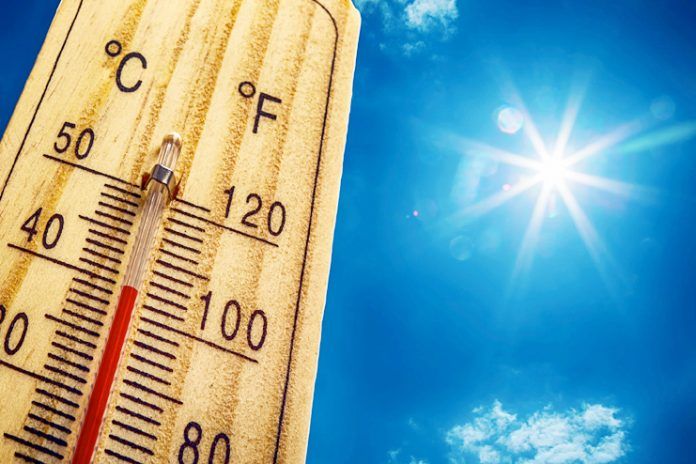Affiliate Disclaimer
Some links in this article are affiliate links. We may earn a small commission if you make a purchase through these links, at no extra cost to you. We only recommend products we find useful to our readersWith the summer honing above our heads and the temperature rising constantly to a level of unbearable, it is best to stay wary of the various possibilities of fatalities that accompany this scorching heat, heat stroke being the primary one. Heat strokes often cross over 1000 deaths every year in the United States itself and that is not even the hottest part of the world. Can you even imagine the kind of heat exposure the tropical parts would be getting and the kind of risks they are prone towards?
What is A Heat Stroke?

A heat stroke, otherwise known as hyperthermia, is a medical condition where the body’s temperature upsurges to an unregulated and abnormal level because of the body’s impairment in the maintaining the body temperature in normal levels. The other forms of hyperthermia, heat cramps and heat exhaustion, are not that fatal like heat stroke.
The conditions related to heat stroke demands immediate medical attention, failing which can even lead to the death of the individual. For people who aren’t aware, the condition encircling heat stroke often finds the body temperature exceeding the 104 F and 40 C mark which is way more than what the body can handle. Our body primarily dissipates the heat that it generates during the process of metabolism. When the temperature is exceedingly high and humid, the body fails to keep up with the heat regulation which results in increased levels of temperature which in turn causes heat stroke.
What Does Heat Stroke Feel Like?

The signs and symptoms of a heat stroke doesn’t necessarily happen all at once which is why many people often fail to administer the heat stroke treatments because they fail to catch up with the symptoms. A heat stroke might not often feel like a typical heat stroke because the symptoms start off in phases which then worsens the condition and collaboratively shuts the body down.
Some of the common signs and symptoms on how heat stroke feels like include:
- The patient starts experiencing an unbearably pounding headache which is often characterised by the localisation of it around the back of the head and the sides
- Dizziness accompanies with light-headedness are yet two other symptoms that many people don’t correlate to heat stroke. If you are feeling like you are losing your stance and balance, its time to take it seriously because it might be a heat stroke symptom
- Arrest in the process of perspiration even with the scorching heat. This signifies the impairment in the temperature regulation process of the body. This is often paired with a blazing red and hot skin.
- If you are experiencing a heat stroke, you are more likely going to feel weakness in the muscles along with cramps and pain the various muscular joints.
- Excessive increase in the heart rate followed by erratic breathing and lack in orientation in speech and other gestures.
- The penultimate symptom of heat stroke that many people feel is the onset of seizures in the body. There are regurgitation and extensive recoiling which proves fatal for the one affected.
- Last but not the least is losing consciousness while experiencing a stroke. This is the probable last stage of what a person undergoing heat stroke feels during the process.
What are the Causes of Heat Stroke?

Heat stroke is primarily caused by a prolonged exposure to high degrees of temperature. Not just that, it can even be due to the lack of body’s heat regulation which increases the core temperature of the body, thus perpetuating the process of heat stroke even further. Some of the primary heat stroke causes can be as minimal as it could be but there are some which contribute to a whole lot of it. This is the reason why it is important to identify the issue before it gets way out of hand and there’s no possibility of revival left.
Some of the Primary Heat Stroke Causes Include:
1. Prolonged Exposure to Extreme Temperature
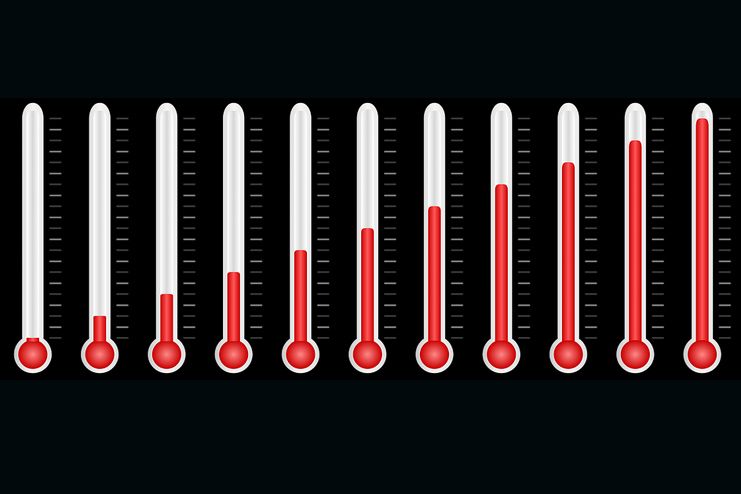 This variant of heat stroke caused by overexposure to hot and humid temperature is known as the non-exertional or the common form of heat stroke. This type of heat stroke is often times triggered when the person is exposed to a very hot temperature for a prolonged period of time. It primarily affects the people of older age and can mainly succumb because of the presence of any chronic illness.
This variant of heat stroke caused by overexposure to hot and humid temperature is known as the non-exertional or the common form of heat stroke. This type of heat stroke is often times triggered when the person is exposed to a very hot temperature for a prolonged period of time. It primarily affects the people of older age and can mainly succumb because of the presence of any chronic illness.
2. Continued Strenuous Activity
 This form of heatstroke is often known as the exertional heat stroke because it is caused by continued exertion on the body muscles in presence of an already existing hot and humid climate. This kind of heat stroke is primarily visible in gym goers, athletes, heavy exercisers and such. The main reason for the inception of this variant of heat stroke is because the body doesn’t get a suitable amount of time to recover from the produced heat inside the body which results in failure of the body temperature regulation and hence the heat stroke.
This form of heatstroke is often known as the exertional heat stroke because it is caused by continued exertion on the body muscles in presence of an already existing hot and humid climate. This kind of heat stroke is primarily visible in gym goers, athletes, heavy exercisers and such. The main reason for the inception of this variant of heat stroke is because the body doesn’t get a suitable amount of time to recover from the produced heat inside the body which results in failure of the body temperature regulation and hence the heat stroke.
3. Dehydration

One of the most common mistakes that people do is not stay hydrated enough in hot and humid weather conditions. It is very important to keep the water balance of the body in check, failure of which can often result in heat stroke. When the body doesn’t get enough water to replenish the lot percentage through perspiration, it often fails to regulate the body’s core temperature which is what causes heat stroke.
4. Consumption of Alcohol
 Alcohol and its consumption has always inflicted negative impacts in one’s life. This also has a pronounced effect on altering the ability of the body to regulate the temperature accordingly. Alcohol submerges the ability of the body to maintain the core temperature of the body which is exactly what results in heat strokes at extreme conditions.
Alcohol and its consumption has always inflicted negative impacts in one’s life. This also has a pronounced effect on altering the ability of the body to regulate the temperature accordingly. Alcohol submerges the ability of the body to maintain the core temperature of the body which is exactly what results in heat strokes at extreme conditions.
How to Treat Heatstrokes?
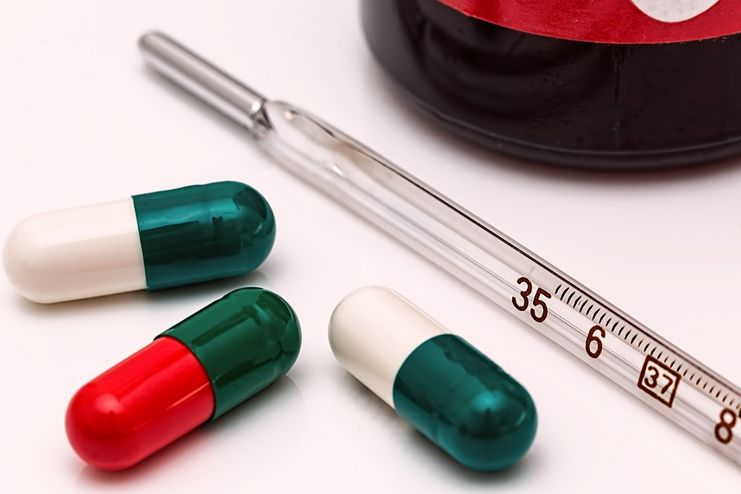 The heat stroke management and heat stroke treatment completely depends on the person. They can do and align their lifestyle to not even face such situation in the first place but god forbid if something like that actually happens, it is necessary that they get immediate medical help because otherwise the hopes dim.
The heat stroke management and heat stroke treatment completely depends on the person. They can do and align their lifestyle to not even face such situation in the first place but god forbid if something like that actually happens, it is necessary that they get immediate medical help because otherwise the hopes dim.
When consulted with a doctor, the primary treatment for a heat stroke doesn’t base off on medicines and heavy doses of anti-biotics. There are primarily four conventional methods of treatment that is involved with heat stroke treatment. The primary first aids for a patient suffering from heat stroke include:
- Immersing the person in a tub filled with cold water. The sudden shock of the cold water helps in the substantial lowering of the core body temperature which is exactly what you need.
- Pack the patient with cooling blankets along with ice packs to bring their exceedingly high temperature back to normal. It is not an easy process and often takes times to actually show some results.
- If none of these methods work, the doctor resorts to the conventional form of treatment and that is via the prescription of medicines that helps regulate the body temperature in a normal way.
Tips for Prevention of Heat Stroke

While we are definitely going to talk about the home remedies that can treat heat stroke, there are a few other generalised prevention tips that we have up our sleeve which come a lot in handy in the prevention of heat strokes. After all, prevention is better than cure.
Some of the Top Tips For Prevention of Heat Stroke Include:
- Start avoiding heavy clothes with a dense fabric because it contributes to increasing the temperature at an alarming rate if the weather is hot and humid, not to mention that you would feel very uneasy and uncomfortable at the same. Try wearing light material cotton clothes that are breathable and aerated and not body hugging. It lets the air pass freely which keeps the body temperature in check.
- Always, and I repeat, ALWAYS put on sunscreen before leaving the house. Sun guard is a very important factor that not just keeps your skin safe from the harmful UV rays but also helps keep you safe from heat strokes.
- Timely intake of water is yet another must when it comes to preventive measures for heat strokes. It is necessary to keep the body’s water balance maintained to ensure that the body stays hydrated at all times.
- While experiencing a heat stroke, it is always best to either plunge into water, if possible, or just constantly apply cold water around the neck and side of the ears to bring down the core temperature of the body. Seek out for a person if you are unable to do it on your own but it is necessary to get any kind of immediate aid while experiencing a heat stroke. As the body loses its ability to regulate the temperature of the body, there are chances that people can die from heat strokes because of a sudden seizure of the functioning of the various organs of the body.
Home Remedies For Heat Stroke

Much like any other disease, even heat stroke has a number of home remedies that can effectively help cure it without any hassle. All you need is to know the natural ingredients, methods and the ways they work to cure the problem.
Sit back and concentrate on these 11 amazing home remedies for heat strokes that actually help:
1. Buttermilk
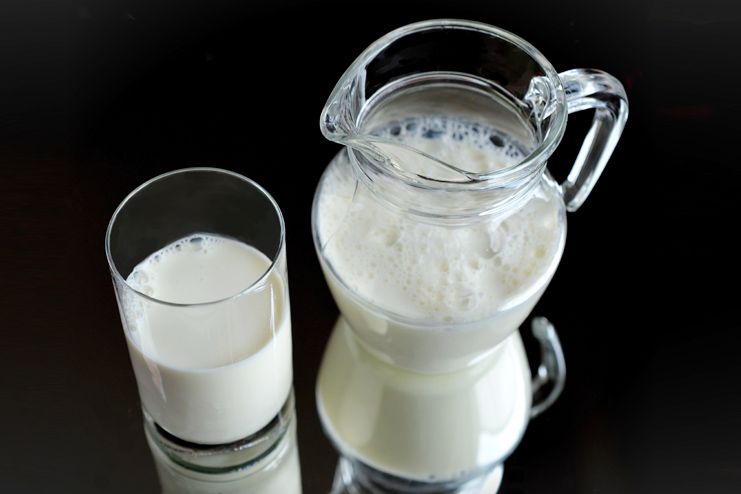 The light and frothy mixture of buttermilk has a number of benefits that effectively help in combating the signs and symptoms of heat stroke. This aids in a number of ways, the primary being the factor of rehydration for keeping the body’s water balance maintained and in check. The buttermilk is even rich in a number of probiotics and other vitamins and minerals which gets replenished.
The light and frothy mixture of buttermilk has a number of benefits that effectively help in combating the signs and symptoms of heat stroke. This aids in a number of ways, the primary being the factor of rehydration for keeping the body’s water balance maintained and in check. The buttermilk is even rich in a number of probiotics and other vitamins and minerals which gets replenished.
What You Need To Do?
- You can either drink the already available packaged buttermilk in the market
- Make your own buttermilk either by the traditional method of culturing or by thinning out the yogurt with either milk or water and add the desired spice as per your taste.
2. Cold Water Immersion
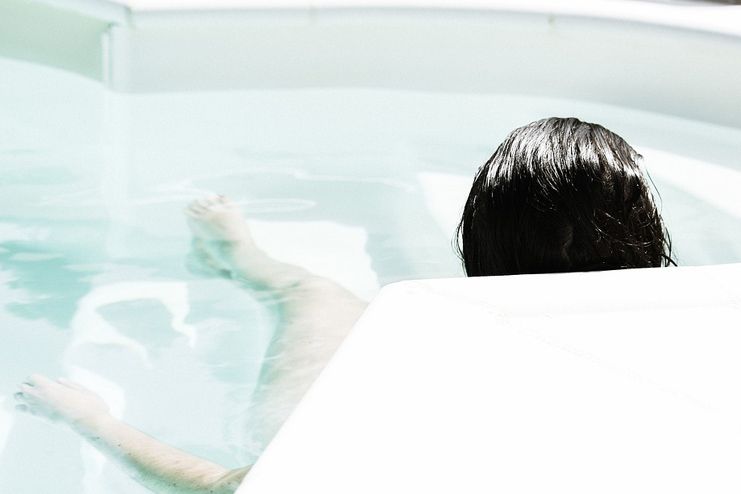 For an immediate body temperature regulation, it is effective to submerge your entire body into a tub of cold water. This helps in effectively lowering the temperature down and averting the possibility of a heat stroke. Submerging the body completely into the water helps in bringing the overall core temperature of the body rather than lowering of the temperature superficially. This kind of treatment is best effective for the exertional type of heat stroke as it helps in the loss of both the conductive and the convective heat from the body.
For an immediate body temperature regulation, it is effective to submerge your entire body into a tub of cold water. This helps in effectively lowering the temperature down and averting the possibility of a heat stroke. Submerging the body completely into the water helps in bringing the overall core temperature of the body rather than lowering of the temperature superficially. This kind of treatment is best effective for the exertional type of heat stroke as it helps in the loss of both the conductive and the convective heat from the body.
What You Need To Do?
- Prepare a bath with cold water and drop some ice cubes if possible
- Submerge the body inside the water as much as possible and stay there till you feel the temperature subsiding
- Shower for a minute or two under normal temperature water
3. Onion Juice
 Although the scientists and experts are still wary of the mode of action of the onion juice for treating the heat stroke symptoms, it surely does work like magic. This home remedy for heat stroke treatment is widely known around and all for the right reasons. It inflicts effective results in treating the heat stroke symptoms with ease.
Although the scientists and experts are still wary of the mode of action of the onion juice for treating the heat stroke symptoms, it surely does work like magic. This home remedy for heat stroke treatment is widely known around and all for the right reasons. It inflicts effective results in treating the heat stroke symptoms with ease.
What You Need to do?
- After the heat stroke has subsided a bit, apply the juice of an onion behind the ears, on the chest as well under the feet to notice remarkable results
- Another way to do is to mix one tablespoon of onion juice with one tablespoon of honey and consume it every day for a week or so following the heat stroke
4. Pickle Juice
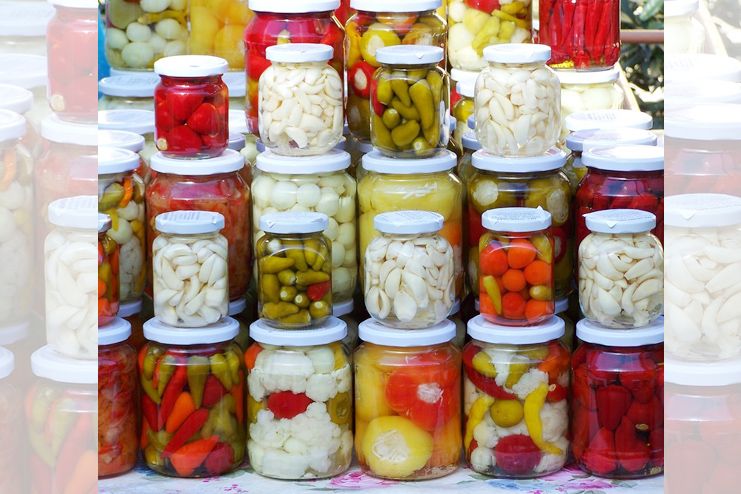 Pickle juice is yet another home remedy that helps in the heatstroke treatment. Many experts have claimed that the consumption of a tablespoon of pickle juice helps in improving the hyperosmolarity of the cells of the body. This, in turn, ensures proper maintenance of the oil balance in the body. This kind of natural remedy works best for treating the symptoms that come along with exertional heat stroke. It helps in curing the muscle cramps by expanding the interstitial volume of the plasma.
Pickle juice is yet another home remedy that helps in the heatstroke treatment. Many experts have claimed that the consumption of a tablespoon of pickle juice helps in improving the hyperosmolarity of the cells of the body. This, in turn, ensures proper maintenance of the oil balance in the body. This kind of natural remedy works best for treating the symptoms that come along with exertional heat stroke. It helps in curing the muscle cramps by expanding the interstitial volume of the plasma.
5. Tamarind
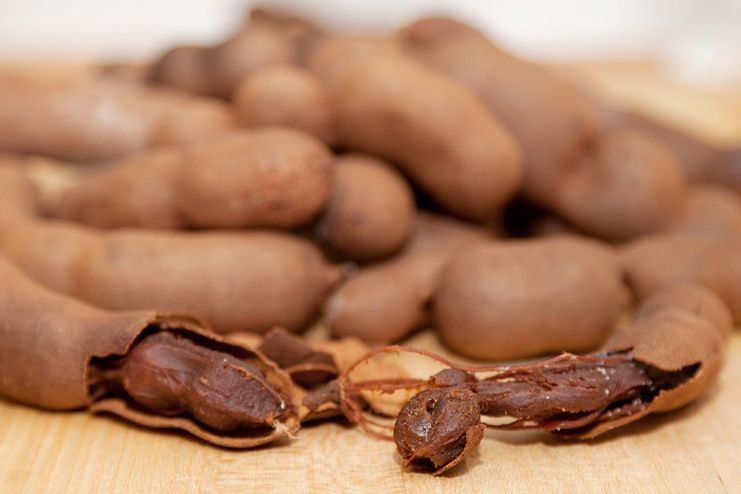 Yet another amazing prevention for heat stroke is tamarind. Tamarind has cooling properties which is a lot beneficial in treating the signs related with heat strokes. It also replenishes the lost nutrients and minerals from the body, thus assisting is curing the possible causes for the onslaught of heat stroke.
Yet another amazing prevention for heat stroke is tamarind. Tamarind has cooling properties which is a lot beneficial in treating the signs related with heat strokes. It also replenishes the lost nutrients and minerals from the body, thus assisting is curing the possible causes for the onslaught of heat stroke.
What You Need to do?
- Take a heavy lidded pan and fill it with boil
- Add some tamarind in it and boil the mixture till the tamarind leaves all its pulp
- Add some sugar or honey and some salt to make it taste better
- Drink this drink twice a day during extremely hot weather conditions
- Store the excess in the refrigerator and drink on a regular basis
6. Raw mango
 Unlike the tamarind which is made into a fluid and drank, the home remedy with mango is a bit different. You can obviously stick the aam panna drink to soothen the harshness of the climate but there is yet another way that helps in lowering the body temperature and maintaining it during the hot weather conditions.
Unlike the tamarind which is made into a fluid and drank, the home remedy with mango is a bit different. You can obviously stick the aam panna drink to soothen the harshness of the climate but there is yet another way that helps in lowering the body temperature and maintaining it during the hot weather conditions.
What You Need To Do?
- Either consume the pulp of raw mango with spice which is made into a cool summer drink
- Boil the raw mango and submerge it in cold water. Extract the pulp and slather it all over your body. It helps in drawing out the excess heat from the body, thus, lowering the body temperature.
7. Coriander Water or Basil Leaves
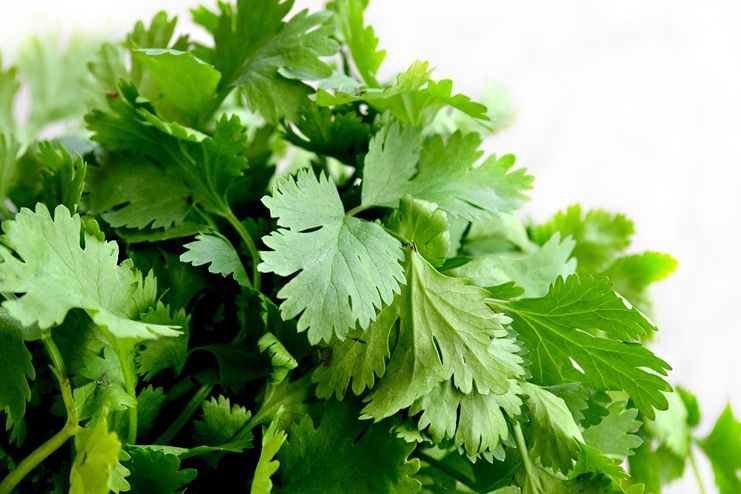 Heat strokes is not just the alleviated body temperature but the symptoms sometimes even accompany nausea and dizziness. The coriander water and basil water helps in not just minimising the core temperature of the body but also helps in reducing signs of nausea. Coriander/basil helps in extracting out the excess body temperature from the body, thus, cooling it in the process.
Heat strokes is not just the alleviated body temperature but the symptoms sometimes even accompany nausea and dizziness. The coriander water and basil water helps in not just minimising the core temperature of the body but also helps in reducing signs of nausea. Coriander/basil helps in extracting out the excess body temperature from the body, thus, cooling it in the process.
What You Need to do?
- Blend a bunch of coriander/basil in a blender with some water
- Add a pinch of sugar in the blended mixture
- Cool it in the refrigerator
- Drink it when you feel the symptoms of heat stroke seep in
8. Avoid Alcohol
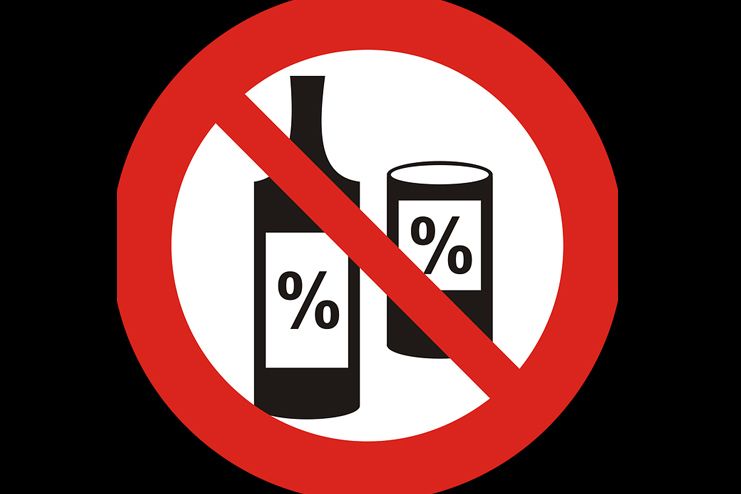 Alcohol is very fatal for heat strokes. It is always advisable to stay away from alcohol during extremely hot weather conditions. It tends to accentuate the signs and symptoms of heat stroke, thus making the situation even worse. Alcohol tends to disintegrate the body’s functioning when it comes to maintaining the body temperature. It is why it is best to avoid alcohol at all costs.
Alcohol is very fatal for heat strokes. It is always advisable to stay away from alcohol during extremely hot weather conditions. It tends to accentuate the signs and symptoms of heat stroke, thus making the situation even worse. Alcohol tends to disintegrate the body’s functioning when it comes to maintaining the body temperature. It is why it is best to avoid alcohol at all costs.
What You Need to do?
- Nothing much, just avoid the consumption of alcohol. As simple as that.
9. Apple Cider Vinegar

Apple cider vinegar (ACV) has time and time proved its efficiency in the field of alternative medicine. Much like every other disease and health problem, ACV helps in replenishing the body’s lost nutrients and ions which is lost due to excessive sweating and heat exposure. It also adds to minimise the overall core temperature of the body.
What You Need To Do?
- Mix one tablespoon of apple cider vinegar to a glass of cold water
- Stir it well and drink it if you feel signs of dizziness after being out in the sun for prolonged period of time
[Read More Benefits of Apple Cider Vinegar]
10. Aloe Vera
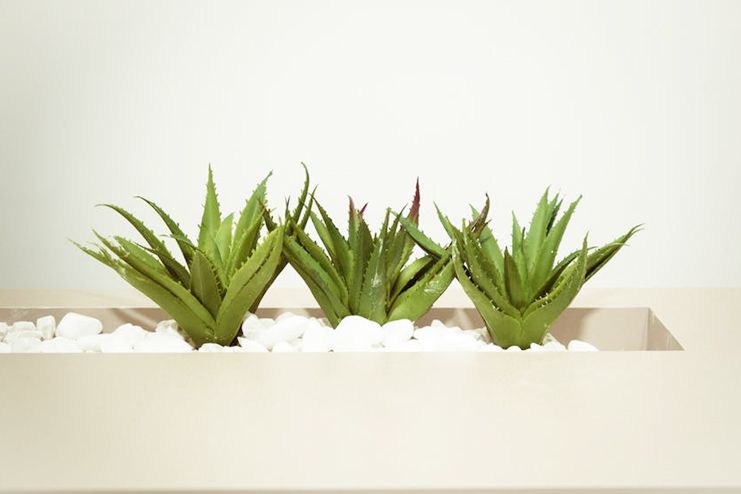 Aloe vera is popularly known worldwide for its cooling effects that it provides during the summer days. It effectively contributes to the treatment and prevention of heat strokes as well. Application of the aloe vera pulp all over the skin not just lowers the body temperature but also hydrates its which is yet another added bonus.
Aloe vera is popularly known worldwide for its cooling effects that it provides during the summer days. It effectively contributes to the treatment and prevention of heat strokes as well. Application of the aloe vera pulp all over the skin not just lowers the body temperature but also hydrates its which is yet another added bonus.
What You Need To Do?
- Cut an aloe vera leaf and extract the pulp
- Apply the pulp all over the body or even just apply a readily available aloe vera gel on the body
11. Sandalwood Powder

Sandalwood is known for its healing and cooling properties. This is exactly what plays a crucial role in treating the signs and symptoms associated with heat stroke. The application of the sandalwood paste on the certain parts of the body ensures in extracting out the excess levels of heat from the body, thus, cooling the body off as well.
What You Need to do?
- Take two to three tablespoons of sandalwood powder in a bowl and add some water to make a smooth paste
- Apply this on the forehead, under the feet, and on the chest
Side Effects of Heat Stroke

While the side effects of heat stroke primarily coincide with the signs and symptoms of heats strokes, there are a few other long terms side effects that can affect an individual who has suffered a heat stroke.
Some of the most common heat stroke side effects for the long term include:
- Organ failure
- Seizures
- Coma
- Disruption in personality traits
- Irregular functioning of the cardiac system
- A probability of miscarriages in a woman
- Death
How Long is the Recovery Period of a Heat Stroke?
The answer to this question is not distinct. It completely depends on the person suffering but on a general scale, the time of recovery can go from 2 days to 2 months. If the blow is not that severe, a two-day hospital visit is more than enough to make them stand right back on their feet, with certain precautionary measures. If the case is severe, there are chances that the process of recovery may prolong to a month or two.
It is thus necessary to be very alert with the heat stroke symptoms and start tending to them right off the bat to experience remarkable results. The faster these symptoms are treated, the faster the person recovers from the trauma of a heat stroke.
Difference Between Heat Stroke And Heat Exhaustion

While there is a very fine line between the two terminologies of heat stroke and heat exhaustion, these are more or less similar in terms. In simpler terms, prolonged ignorance to the heat exhaustion symptoms results into heat strokes. The kind of symptoms for both are more or less similar.
The similar grounds of signs include hot flashes, reddened skin, dizziness, disorientation, headache, nausea, shortness of breath, rapid heart rate and so on. The only difference between these two variants of hyperthermia is the fact that heat exhaustion is a prolonged process with the symptoms affecting the individual over a stretched time period. Heat stroke, on the other hand, happens instantaneously and needs immediate medical care because lack of it for the treatment of heat stroke can result in seizure of the body functions because of the lack of temperature regulation of the body.
In this Article













